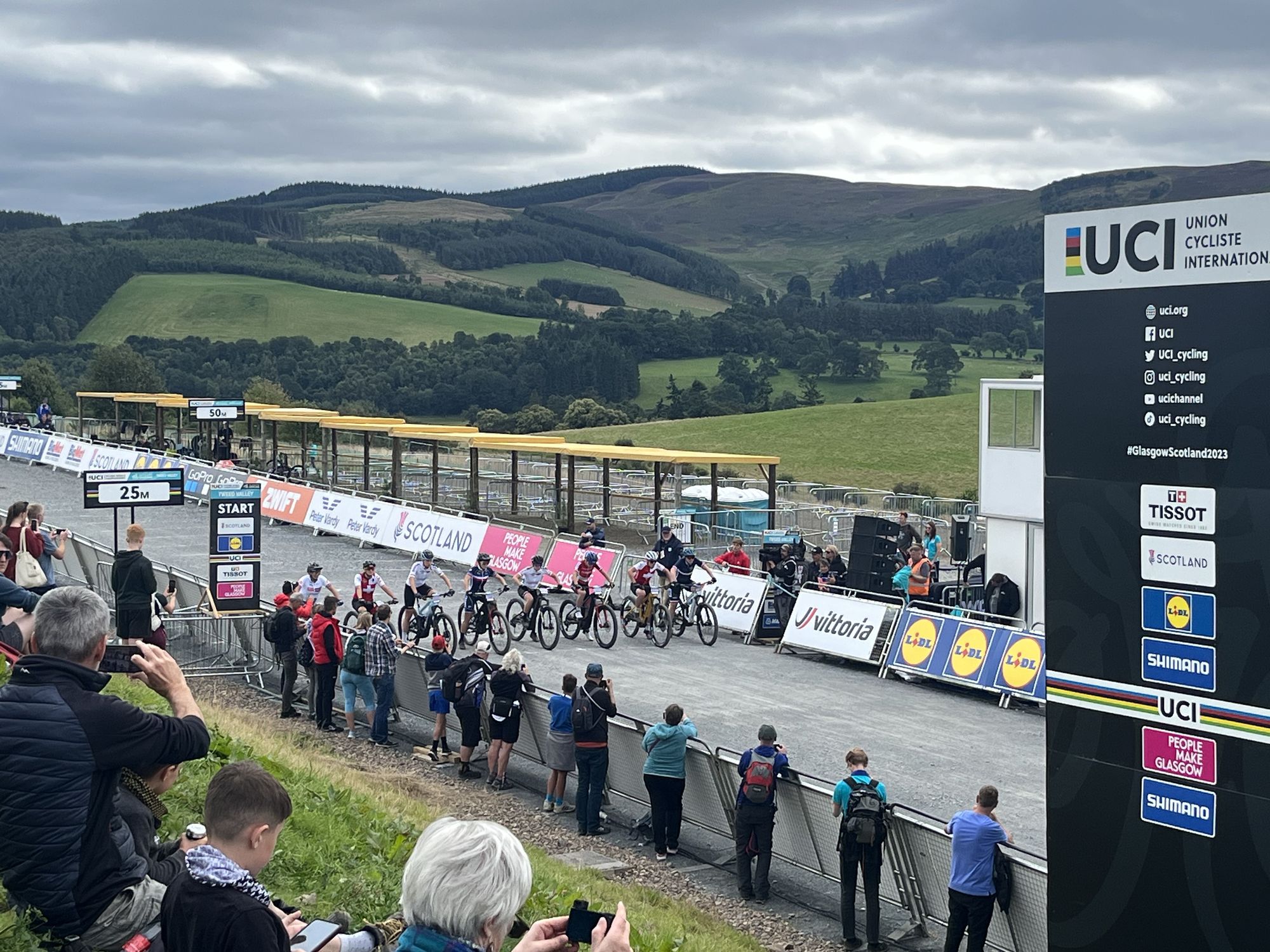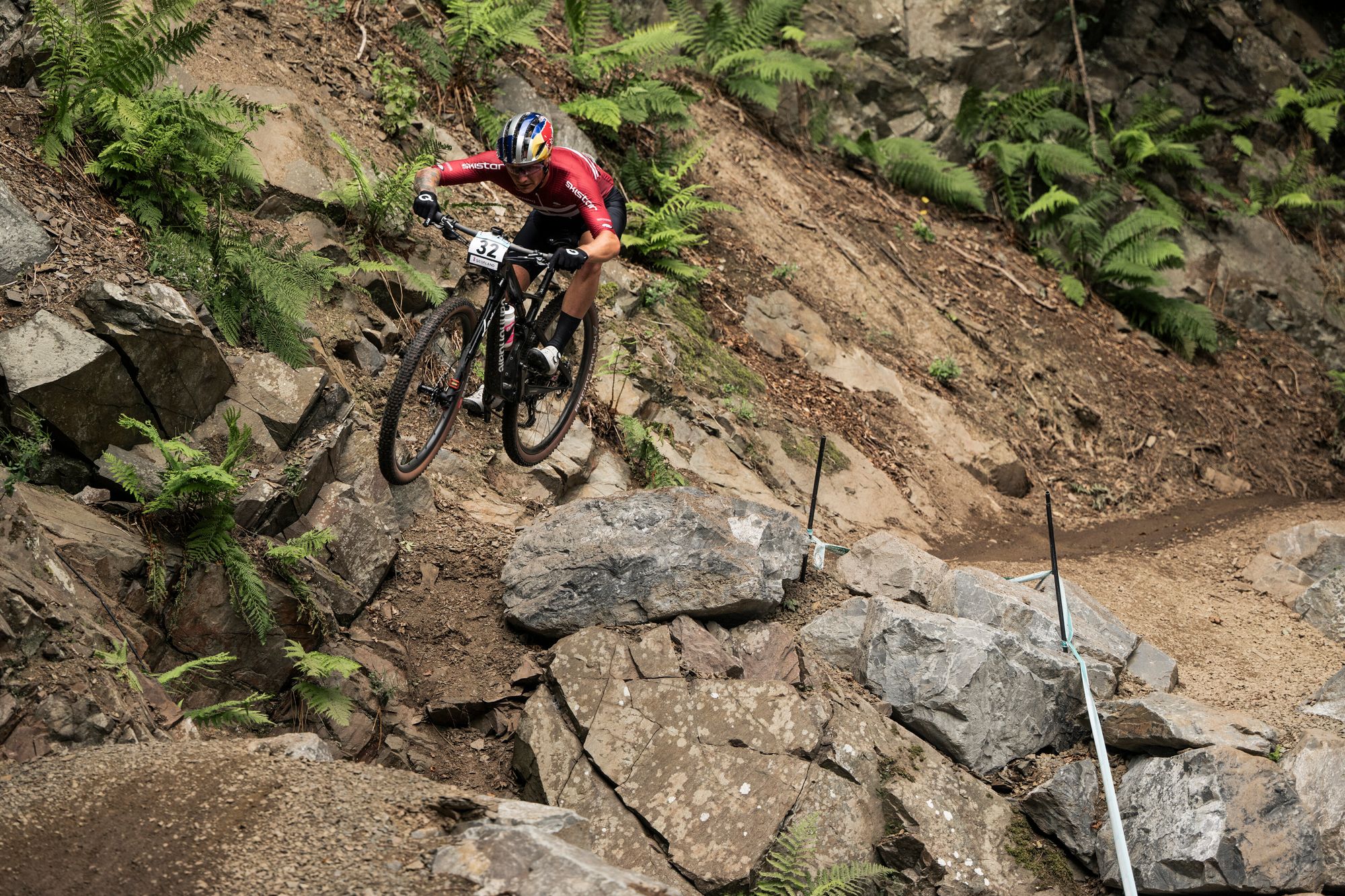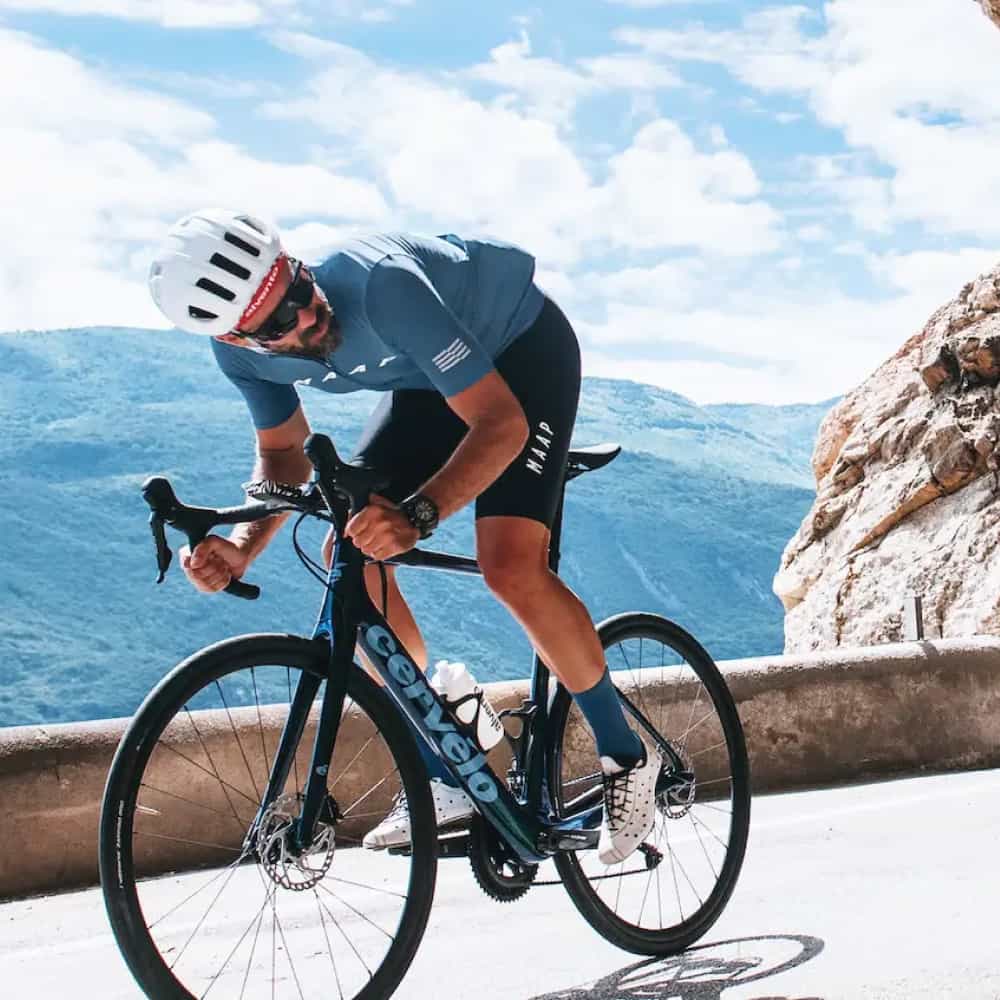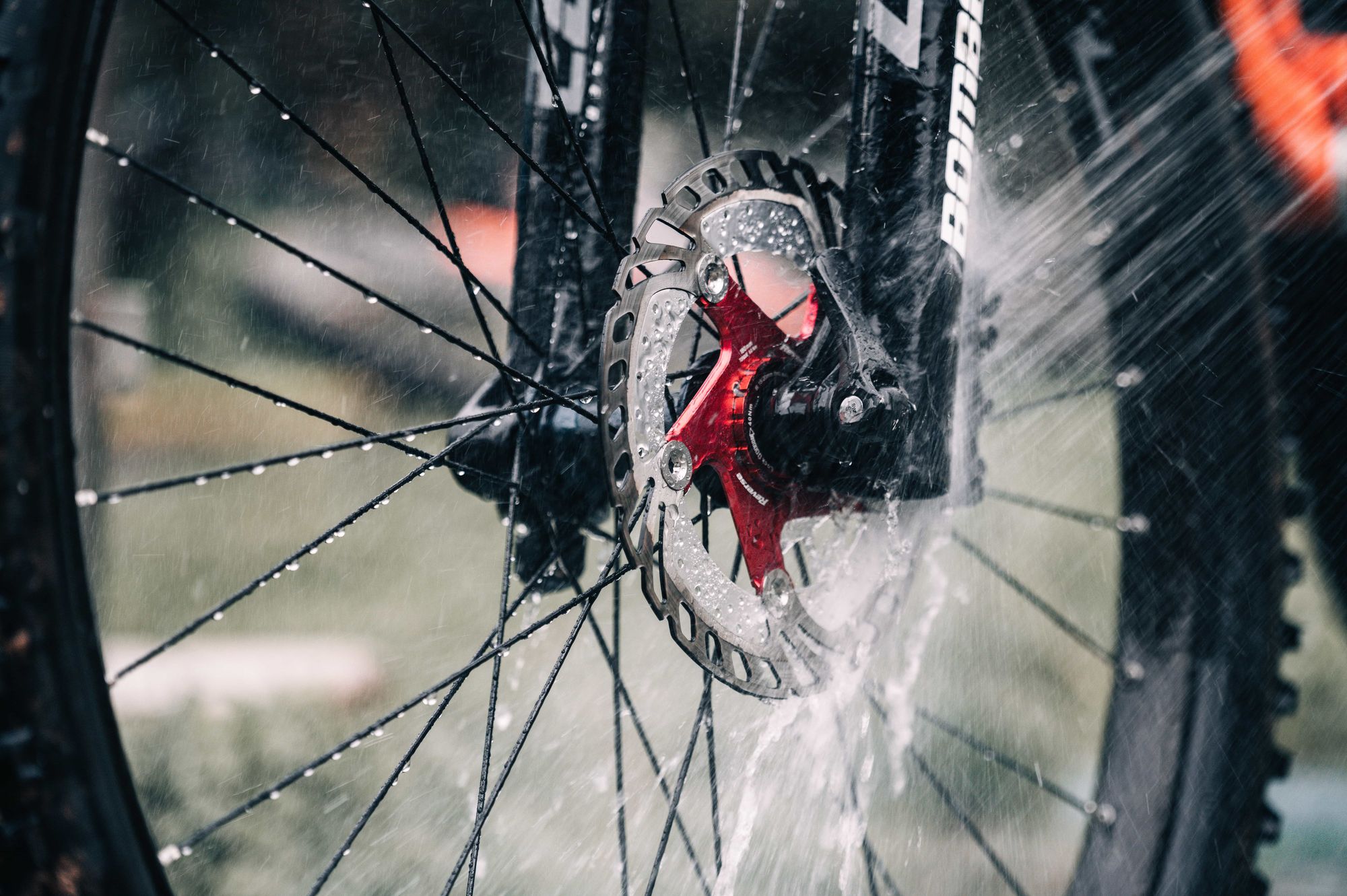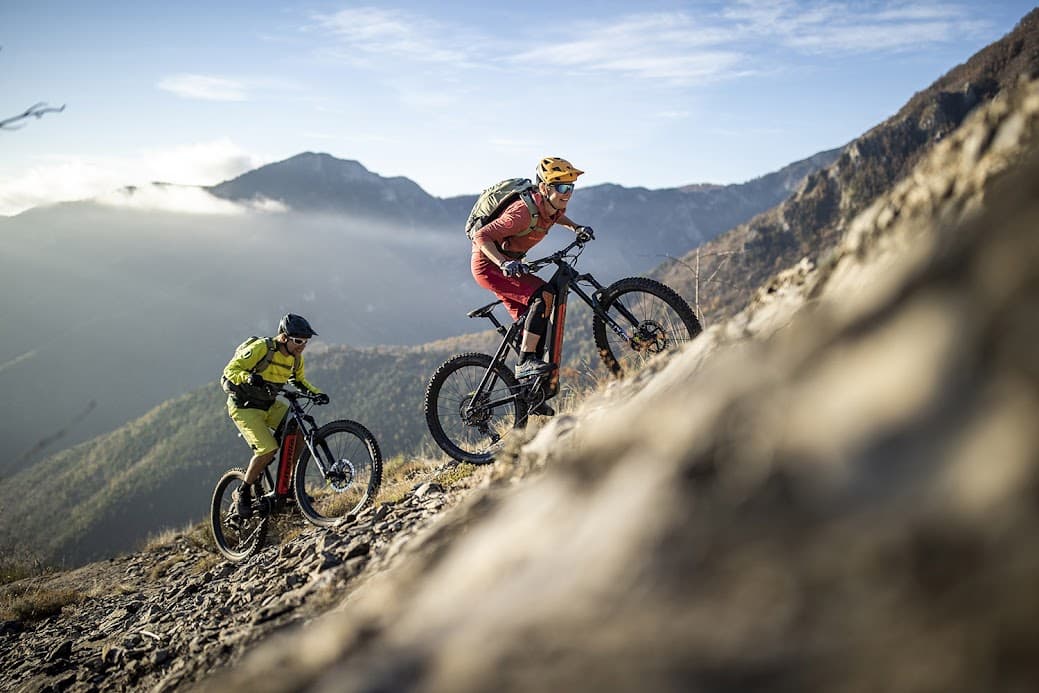For the first time ever, the UCI has decided to hold a super world championships, where they have combined the majority of World championship races in one country. If you are unfamiliar with the format, the World Championship is a one-day race, unlike world cups or a series where the racer is awarded the coveted rainbow jersey they get to wear for the next year and are usually split into separate disciplines. For example, the Mountain bike events are often held in mid-summer, whilst the road and time trail events happen in September traditionally.
The events feature both Para and able-bodied Track cycling at the Glasgow Velodrome, BMX race and freestyle at the bike park, road races in Glasgow city centre, Downhill at Fort William, Trial riding in Glasgow, a Time trial at Stirling, and all the Cross Country mountain bike races in the world-famous Tweed Valley. It's a lot to pack in over just a couple of weeks, and the organizers have done a fantastic job.
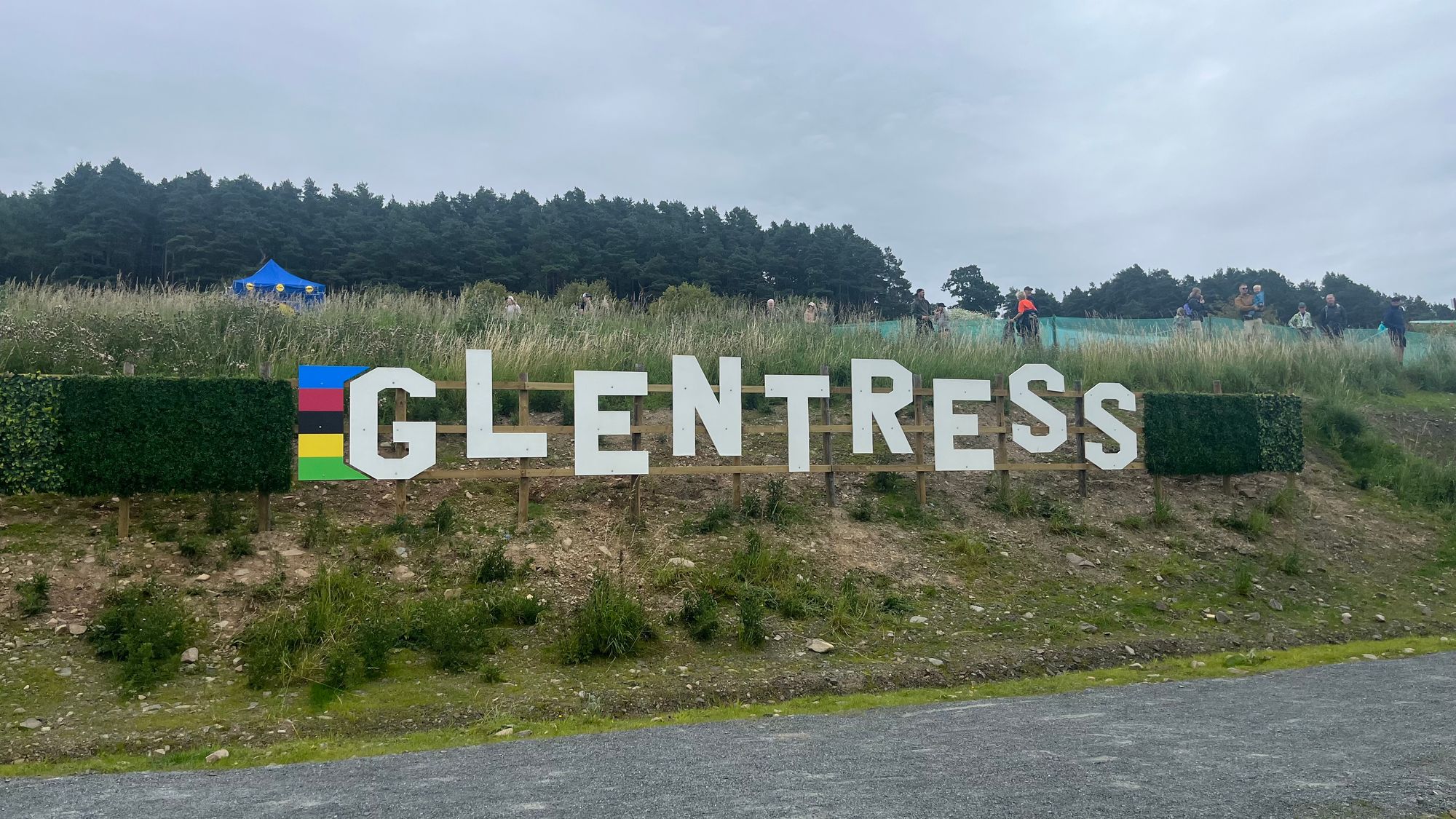
What's Cross Country Mountain Biking All About?
XC mtb has grown from its ’90s roots, where it was mainly a battle of endurance, and now has four different events over the course of the week that require different skills and rider types. The different versions can initially seem slightly confusing, so here's a quick breakdown of the formats before we get into the actual racing.
What's XCO?
XCO is the traditional format of Cross country mountain biking. It's the longest of the formats and is the highlight of any race weekend. XCO stands for Cross Country Olympic, as this is the format used for the Olympic event last won by Tom Pidcock in Rio 2022. The race takes around two hours and normally runs on a very similar course to the other events, and features a mix of fast and furious racing over punishing climbs, technical descents, and really tricky features such as large rocks, jumps, and drops that really push riders skills and endurance to the limit.
What's XCM?
XCM is XCO’s longer-distance sibling. The races are usually 4 hours plus, and due to the distance, they are often run on slightly less technically challenging courses, but that doesn't mean they are easy. The extra distance and climbing make them a real test of riders' mental and physical strength.
What's XCC?
XCC is XCO's raucous family member and is always a great race to watch either in person or on your screen. Normally referred to as Short Track, it is a fast and frantic 20 minutes of pure handlebar-to-handlebar racing. It uses a shorter, often less technical version of the XCO circuit. During the normal world cup season, the XCC is used to decide rider's grid positions for the XCO race, but it is a stand-alone event for the world championships.
What's XCE?
And on to the XCE. It is an exciting, relatively new format designed to showcase the growing Electric Mountain bike scene. It's a mass start race just like the other cross country events and uses a similar course as the XCO but features much more technically difficult steeper climbs. Electric mountain bike riders may use a motor, but don't be fooled into thinking the XCE event is easy. An e-MTB gives the rider an extra 250 watts of power, but the extra power just means the riders go much faster, and the technical nature of the course makes it much more of a full-body workout as it takes a lot of strength and endurance to muscle the bike around the course. An E-bike is usually over 20kg in weight, so it is nearly double that of a traditional XC race bike. This has a big effect on how you ride it, and tight technical descents can be more challenging as there's a lot more mass to slow down and control.
For those of you unfamiliar with e-bikes, they look similar to a standard mountain bike but use a motor to offer assistance whilst pedalling. Unlike a motorbike, they will only give power when being peddled and are referred to as a Pedelec or pedal assist bike. For general riding, they are fantastic for riders looking to go further or ride on more difficult terrain, and the XCE follows a similar vein. Critically the riders are only allowed to use one bike and battery for the duration of the race, so battery management is also very important. It's faster to climb in Boost or Turbo mode, but it will use your battery much quicker, so riders have to be thoughtful of when to use it, much like DRS for those that follow Formula 1. E-bikes are also limited to 25 kph/15.5mph, so on the flat start-finish straight, the riders are pedalling faster than the motor assistance, which requires a lot of strength.
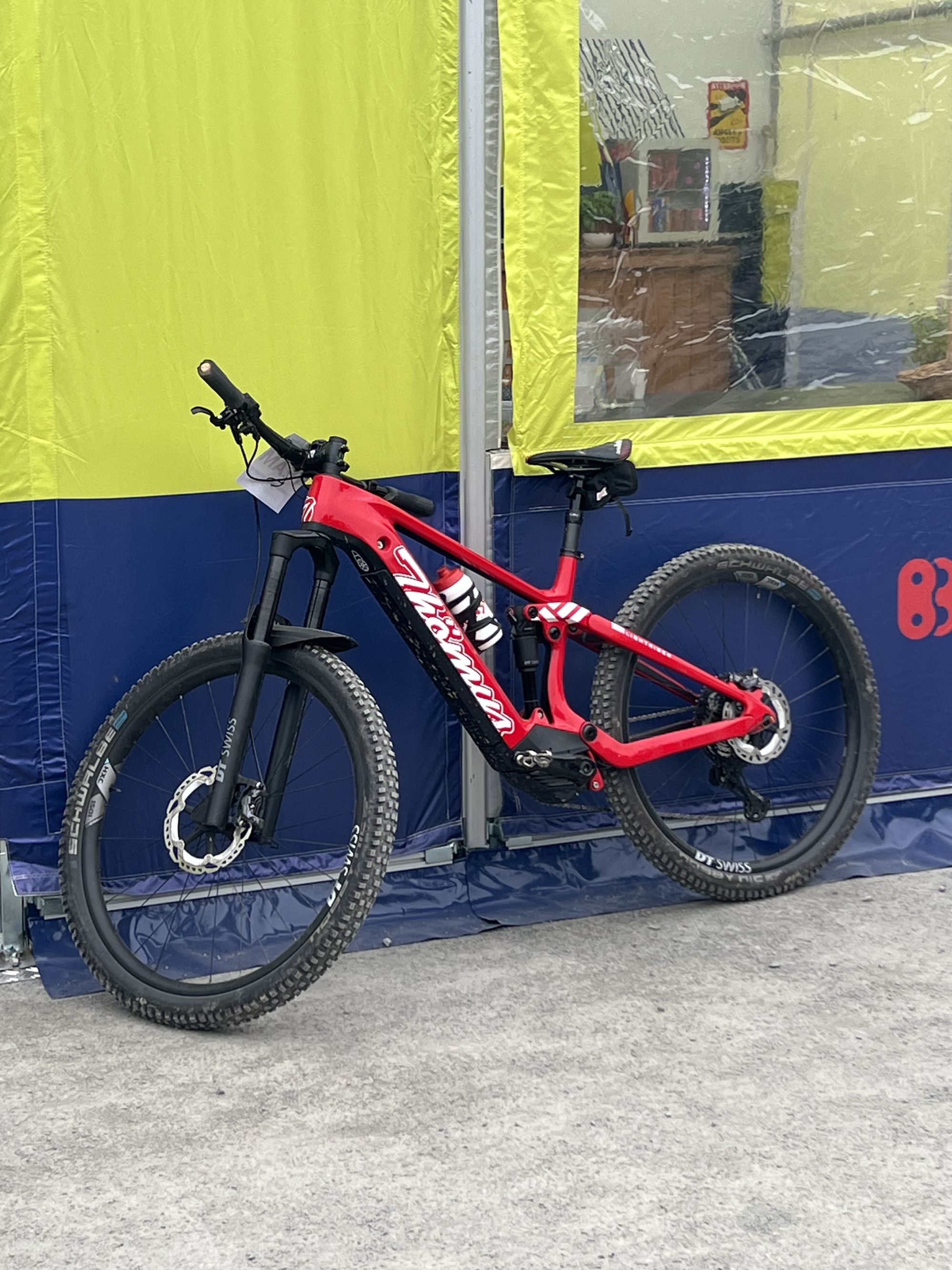
Cross Country Electric: The Shakedown
The series was first launched by the UCI in 2019, and it has already had some top-name riders taking part, most notably current Olympic gold medal holder Tom Pidcock who won in Leogang, Austria, in 2020, as well as appearances from two-time gold medallist and five-time world XCO champion Julien Absalon and road superstar Peter Sagan who has worn the rainbow stripes on three occasions on the road.
XC courses have changed a lot over the years. Long gone are the boring grassy courses of the nineties! The trail builders in the Tweed Valley are world-renowned for the quality of their work, and this was no exception. The course featured very testing and technical climbs with steep, tight corners and several logs that riders had to hop up, which is quite a challenge when they are pushing their bodies to the limit. The majority of the 3.5 km long course is made up of singletrack, with several big gap jumps and a scary-looking vertical section of rocks, and features 145m of combined climbing. Whilst it doesn't feature as much height gain as some of the Alpine-based race circuits, the steep and testing nature of the climbs and limited places to recover make it a very demanding course, It is certainly not for the faint-hearted.
The Women's Race
The women's race was the first up on the technical course, and the talk of the pits was the announcement shortly before the event that the winner of the previous two editions, Nicole Goldi, had decided to retire with immediate effect for both personal reasons and struggling with the motivation and sacrifices needed to race at the highest level. This left the field wide open, and any of the ten riders that took to the line could have taken the win.
British hopes lay with Tracy Moseley, who has pretty much done it all in the world of mountain biking racing at the highest levels in Downhill, Enduro, and XC, as well as helping the current crop of young British riders like Evie Richards as a skill and downhill coach. However, the main favourites for the race were the Swiss and German riders Nathalie Schneitter and Sofia Wiedenroth, who had both podiumed at previous events.
The girls set off at a ferocious pace from the line, the extra boost from the motors making a noticeable difference to the gain in speed from a normal race. The first lap of a mountain bike race is often the most important, as it can be very difficult to pass on singletrack sections, Schneitter got off to a fantastic start, leaving her competitors fighting in her dust to keep up on the first climb, and she pulled a big gap once she was on the first technical climbing section.
The rest of the field where lined out in single file on the first climb, such was the high pace set by the Swiss rider, with Kathrin Stirnemann in second place. As expected, the former Downhill world champion Moseley made up places on the descent, pulling a fantastic move by riding the difficult high line across a large tree root on one of the corners. Sofia Wiedenroth wasn't far behind, though, and by the end of the first lap, had moved up into second position.
Once out in front, Schneitter dominated the race, she took full advantage of the empty track in front of her, meaning she could pick her lines and ride the climbs at her pace, and she continued to open up a gap on the rest of the field. The fast first lap set the tone for the rest of the five-lap race, with the positions staying the same throughout the race.
Schneitter took the last lap at a more sedate pace knowing she had it in the bag and ended up winning by over a minute from her German competitor Wiedenroth with the French rider Justine Tonso rounding out the podium in third place. Moseley was just out of the medal positions, coming fifth, but received the biggest cheer of all the riders from the knowledgable home crowd.
Women's results
1st. Nathalie Schneitter: 52:23 Switzerland
2nd. Sofia Wiedenroth: +1:00 Germany
3rd. Justine Tonso: +1:34 France
4th. Kathrin Stirnemann: +1:50 Switzerland
5th. Tracy Moseley: +2:18 Great Britain
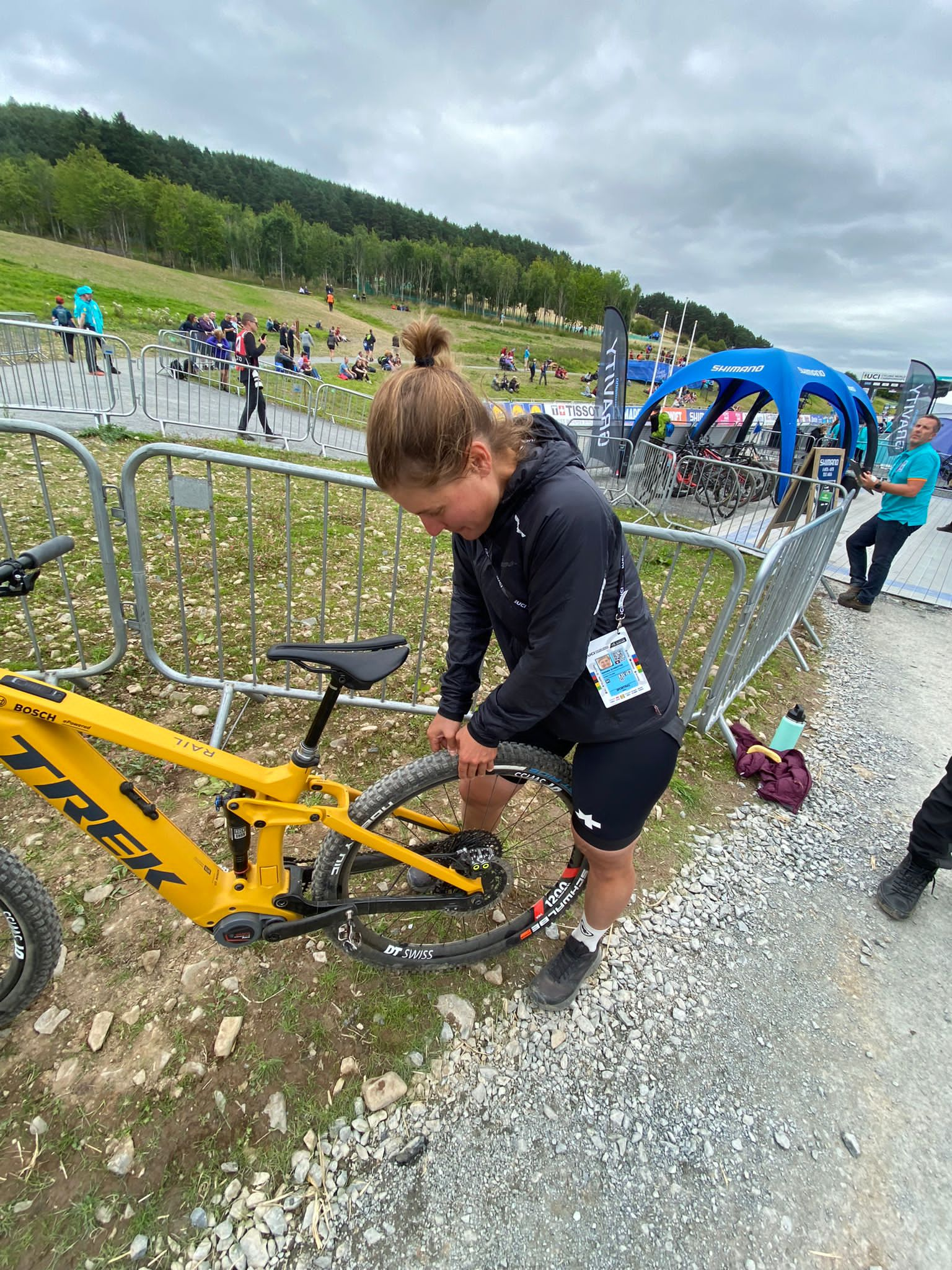
The Men's Race
The men's race was up next, with the 25 riders taking on six laps of the Glentress circuit. Up until this point, the Swiss had made a clean sweep of all the races, having won the women's XCE and the team relay event earlier in the day, but here the French were hot favourites with a strong five-man team including two-time and current World champion Jerome Gilloux.
Of the rest of the field, Joris Ryf from the dominant Swiss squad was the talk of the pit area pre-race, as was Andrea Garibbo, who is a regular top three rider on the E-enduro circuit and many thought his technical skills would serve him well on the course. Robert Williams was riding for Team GB, and many hoped the home advantage and familiarity with Glentress would serve him well.
The Frenchman Hugo Pigeon got off to a flying start taking the lead into the first technical section, with Joris Ryf following close behind. As is often the case with XC racing, there were bottlenecks in the tighter technical corners as twenty or so riders fought for position, which helped the two riders get a break from the rest of the field, opening up a considerable early gap.
The French and Swiss pairing, like in the women's race, continued to increase their lead over the rest of the field and were very well-matched. Pigeon has experience in the Enduro World Series and would push the pace on the descents and technical sections, and Ryf, the more XC-biassed rider, would push hard on the more pedal-heavy climbing and flat sections.
They worked together well up until the third lap when Pigeon pulled into the pits to grab an energy gel and drink, and at this point, Ryf attacked hard in what turned out to be the race-winning move, sprinting along the start-finish straight as hard as he could. Attacking whilst in the feed zone is frowned upon in the road racing world, but all fair in love and war in emtb!
Once Ryf established a gap, he, like his female counterpart, used the empty track in front of him to his advantage and continued to push hard and steadily gained distance on his rivals over the course of three laps, stretching his gap out from two seconds on his initial attack to 21 seconds at the finish, and completed a hat trick of wins for the Swiss team in the off-road events here at the world champs.
Pre-race favourite Jerome Gilloux came home in third, with compatriot Emeric Lenzer coming in fourth. Although he was over two minutes down on the winners, Lenzer was by far the most stylish racer of the day, pulling lots of tricks on the many gap jumps on the course and looked to be having a great time on the track.
The XCE was a great intro to the circuit for fans and riders alike and has whetted the appetite for the upcoming XCC and XCO races.
Men's results
1st. Joris Ryf: 52:21 Switzerland
2nd. Hugo Pigeon: +0:21 France
3rd. Jerome Gilloux: +1:38 France
4th. Emeric Ienzer: +2:22 France
5th. Remy Gena: +2:57 France
Do you have mountain bike insurance?
For extra peace of mind, when hitting the trails, at home or abroad, check out our specialist mountain bike insurance.

